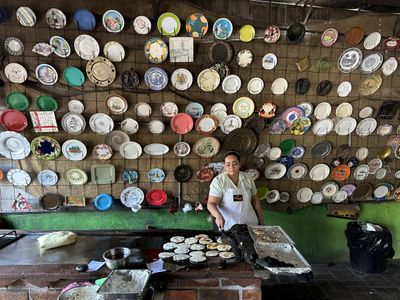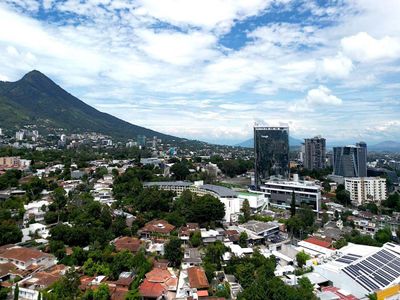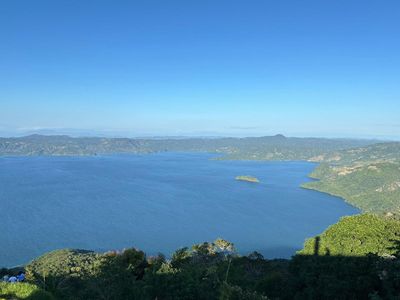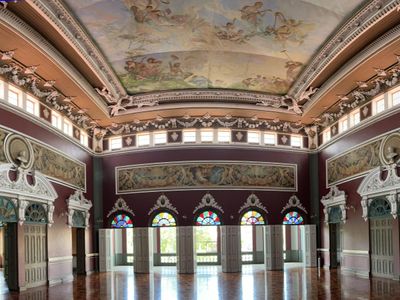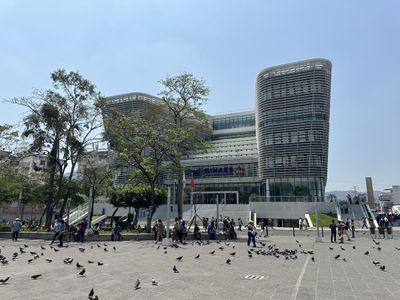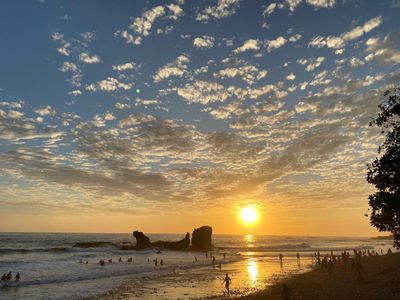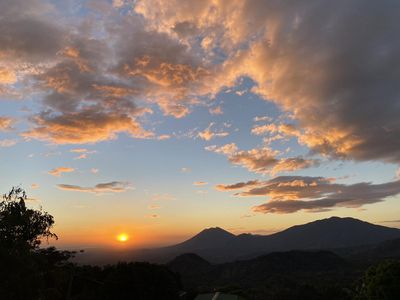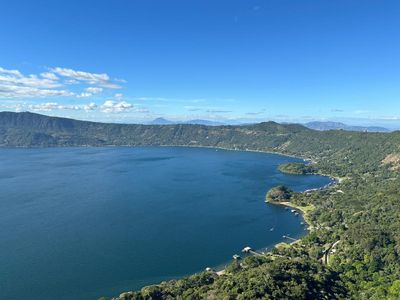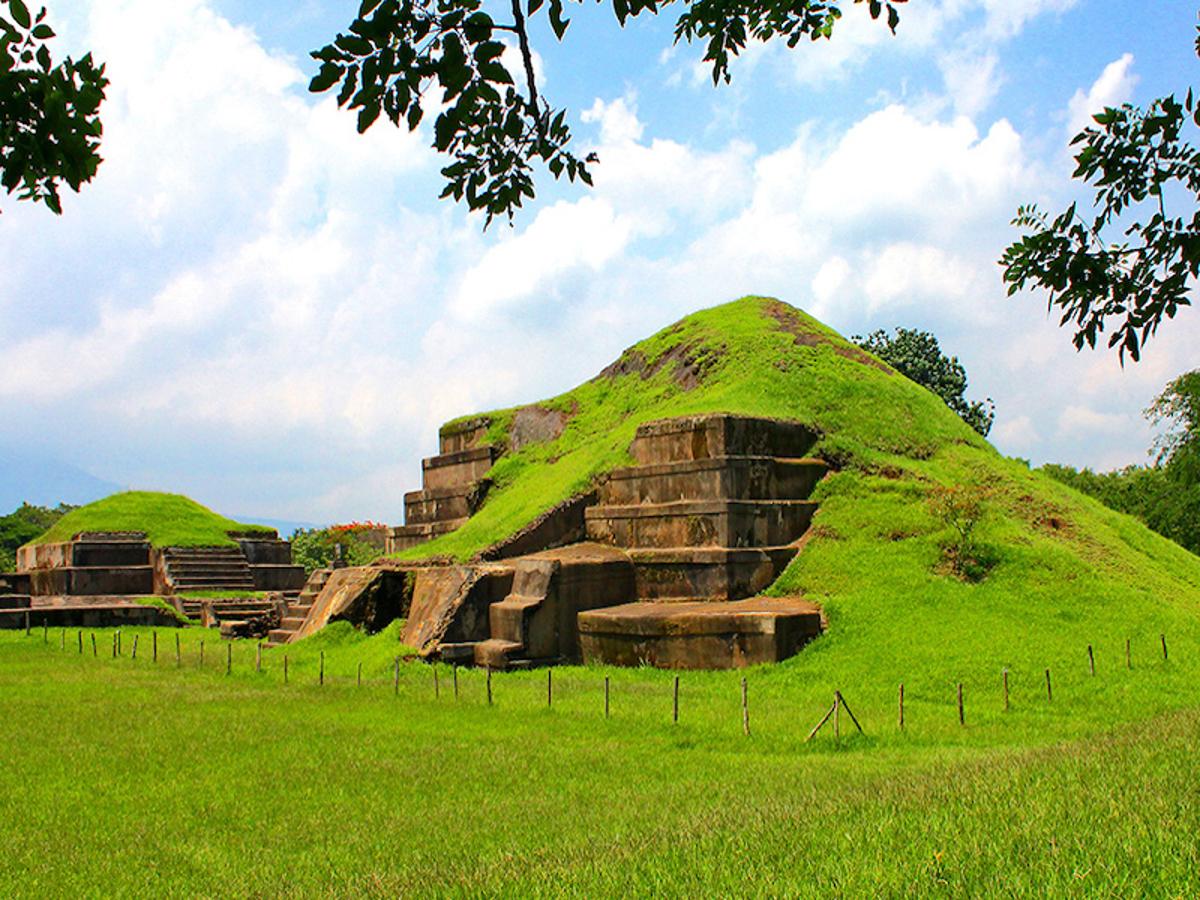
El Salvador, though the smallest country in Central America, brims with vibrant history and rich cultural heritage. This land is a treasure of intriguing archaeological sites, each revealing remarkable stories about the civilizations that once flourished here. Among these sites, Tazumal, Joya de Cerén, and San Andrés stand out as crown jewels. Let’s embark on a journey to unravel the wonders of these sites and dive into the exciting future that lies ahead with advancements in archaeological technology.
Tazumal, located in the charming town of Chalchuapa, is one of El Salvador's most significant archaeological discoveries. Dating back to the Classic Maya period, around 250-900 AD, Tazumal offers a captivating peek into the past with its majestic pyramids and ancient structures.
The site was uncovered in the 1940s and has since been the subject of excavations. Archaeologists have revealed a complex settlement that includes pyramids, tombs, and ceremonial complexes, suggesting Tazumal was a vibrant center of trade and religion. These meticulously restored structures exhibit the sophisticated architectural techniques of the ancient Mesoamerican civilizations.
For those eager to delve deeper into the history of Tazumal, visit the Ministry of Culture of El Salvador offers comprehensive information and insights. You can stroll through the site and witness the grandeur of the ancient pyramids while imagining the bustling life that once thrived here.
One of El Salvador's most remarkable archaeological treasures is Joya de Cerén, often referred to as the "Pompeii of the Americas." In a sudden eruption of the Loma Caldera volcano around 600 AD, this pre-Hispanic farming village was buried under layers of ash, preserving a snapshot of everyday life over a millennium ago. The site was rediscovered in 1976 and subsequently excavated.
Joya de Cerén provides a rare and extraordinary view into the daily lives of the Maya people. Unlike many sites focused on temples and palaces, the beauty of Joya de Cerén lies in its ordinary dwellings, communal baths, storage facilities, and agricultural fields. This archaeological gem offers a unique window into how the common people lived, worked, and organized their surroundings.
In 1993, Joya de Cerén was declared a UNESCO World Heritage Site, highlighting its global cultural significance. To learn more about this distinctive site, visit the official UNESCO World Heritage page.

San Andrés stands as another pivotal archaeological site in El Salvador, steeped in history and cultural evolution. Nestled in the Valley of Zapotitán, this site served as an influential political and ceremonial center between 600 and 900 AD. This site holds immense historical importance as it provides insight into the ancient civilizations that once inhabited the region. The ruins are part of a larger network of Mesoamerican sites that reflect the cultural and political influences of the Maya and other indigenous groups. San Andrés served as a political, ceremonial, and trading center, facilitating interactions among different Mesoamerican cultures.
The discovery of the San Andrés ruins occurred during the 1940s, prompted by agricultural activities that revealed the presence of buried structures. Subsequent excavations in the latter half of the 20th century disclosed numerous pyramids, plazas, and workshop areas, suggesting that the site held significant socio-political power within the region. Archaeologists uncovered artifacts ranging from obsidian tools to ceramic wares, which hinted at San Andrés being a vital point of trade and exchange.
The structures at San Andrés include the Acropolis, a central area believed to have housed the elite ruling class, and various pyramidal platforms indicative of ceremonial purposes. The site is also known for its "chultunes," subterranean chambers likely used for storage or water collection. While the inhabitants’ day-to-day lives remain somewhat enigmatic, evidence points towards an organized society with complex agricultural practices that included the cultivation of staple crops like maize.
San Andrés holds particular historical significance due to its connection with the broader Maya civilization. While primarily governed by local cultures, the site’s architectural styles and artifacts show clear influences from the Maya, such as stelae and ceremonial constructs aligned with Maya calendars. These elements indicate that San Andrés was not only influenced by the Maya but also possibly engaged in trade and shared cultural or religious practices with them, reflecting a multifaceted interaction sphere in Mesoamerica.
The people of San Andrés were part of a rich cultural tapestry that featured linguistic and social exchanges across the region. The site’s decline around the 10th century AD is often linked to broader regional shifts, which saw the waning of several Mesoamerican civilizations, possibly due to ecological pressures or internal strife. Today, San Andrés stands as a testament to the complex histories of pre-Columbian societies in Central America and continues to be a focal point for research and tourism, allowing visitors to delve into the remnants of a once-thriving center of ancient civilization.
San Andrés is situated approximately 32 kilometers (about 20 miles) northwest of San Salvador, the capital of El Salvador. This close proximity makes it an accessible site for visitors traveling from the city. Visitors can explore the grandeur of La Campana, a prominent pyramid structure within San Andrés, and visit the site's museum to see artifacts that provide context to this sophisticated ancient society. For more information, you can contact the Ministry of Culture. Please, send an email to the following address [email protected], call +503 2501-4400, or visit El Salvador Travel.








The Ministry of Culture in El Salvador is venturing into the 21st-century exploration with technological advancements that promise to revolutionize how archaeological sites are detected and studied. The advent of LiDAR (Light Detection and Ranging) and drone technology will play a pivotal role in uncovering hidden treasures beneath the dense rainforest canopy.
LiDAR technology is a game-changer in the field of archaeology, allowing researchers to “see” through vegetation and uncover the hidden structures beneath. This remote sensing technology uses laser pulses to create high-resolution maps of the earth's surface. For El Salvador, this presents an opportunity to uncover undiscovered archaeological sites that are obscured by thick forests and terrain.
Recent collaborations between the Ministry of Culture and international archaeology experts aim to deploy LiDAR scanning in specific regions, which promises to yield new insights into pre-Columbian settlements and previously overlooked areas. The use of LiDAR could potentially double the known archaeological resources of the country without a single spadeful of dirt being turned.

LiDAR-equipped drones have played a transformative role in the archaeological exploration of the Tikal Mayan ruins in Guatemala. Employing advanced LiDAR technology, these drones have enabled researchers to see beneath the dense jungle canopy that traditionally obscured the details of this ancient site. By emitting laser pulses and measuring their return times, LiDAR systems can generate precise 3D maps of the surface below. This capability has allowed archaeologists to discover previously hidden structures and pathways, revealing a more intricate and sprawling city than was ever visible through conventional ground surveys. The data collected from these aerial surveys has been instrumental in illustrating the true extent of Tikal's urban spread, suggesting a metropolis much larger and more complex than previously imagined.
Beyond just mapping the external layout of Tikal, LiDAR technology has provided insights into the sophisticated infrastructure that supported Mayan life. For example, the fine-grained elevation data has helped identify features such as terraced fields, roads, and reservoirs, shedding light on the agricultural practices and water management systems that sustained this ancient civilization. These findings have redefined the understanding of Mayan societal organization and its adaptation to the challenging jungle environment. The use of LiDAR drones in Tikal not only underscores the importance of adopting cutting-edge technology in archaeological research but also highlights a sustainable path forward for studying and preserving other culturally significant yet environmentally sensitive sites worldwide.
El Salvador’s archaeological initiatives are a blend of preserving the past while embracing future possibilities. Recent excavation projects aim to unravel mysteries still buried at Tazumal, explore the domestic structures at Joya de Cerén, and expand contextual knowledge at San Andrés.
The Ministry of Culture is also prioritizing education and community involvement, promoting awareness and significance of archaeological sites among locals and visitors alike. Workshops, guided tours, and cultural events are regularly organized to engage the public and foster a sense of shared heritage and conservation.
As El Salvador stands on the brink of new discoveries, the collaboration between technology and traditional archaeology holds immense potential. It's a captivating time for archaeology enthusiasts, and the anticipation of new site detections and the wealth of knowledge they promise to unlock is electrifying.
El Salvador’s archaeological sites are not just remnants of ancient civilizations; they are vibrant stories etched into the land. From the towering pyramids of Tazumal to the everyday life preserved at Joya de Cerén and the ceremonial significance of San Andrés, each site is a piece of an intricate historical puzzle.
If you are fascinated by El Salvador's rich history and want to be close to cultural landmarks, consider exploring homes in San Benito on Vivo, just a short distance from the renowned MUNA museum, where many of El Salvador's archaeological treasures are showcased.
As the Ministry of Culture ventures forth with cutting-edge technologies such as LiDAR and drones, the horizon of archaeological discovery in El Salvador is expanding. While many chapters of history have already been written in the land’s terrain, the future promises new tales of brilliance, resilience, and innovation. So the next time you explore El Salvador, take a moment to step back in time and ponder the untold stories still waiting to be unearthed by the next discovery.
Learn more about the exciting developments and projects in El Salvador’s archaeology by visiting Archaeology Magazine and the Ministry of Culture of El Salvador. Here’s to adventure, discovery, and the timeless charm of El Salvador's archaeological heritage!

Sam Martinez
I am a dedicated and passionate real estate professional with more than a decade experience in the real estate market.Explore our latest blog posts
